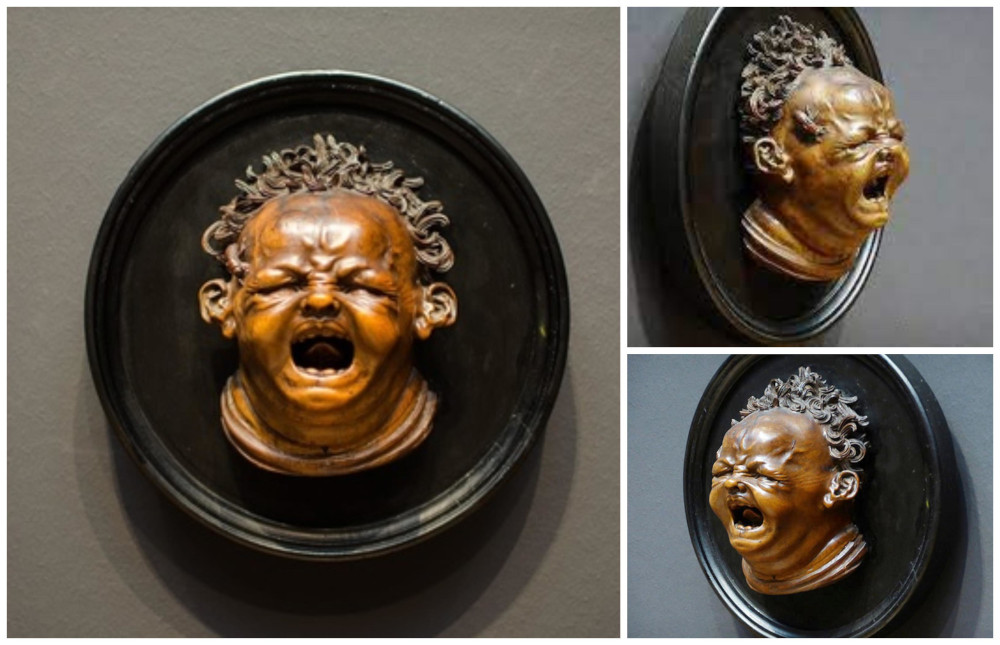Art
Art Appreciation

I had not then acquired the technique that I flatter myself now enables me to deal competently with the works of modern artists. If this were the place I could write a very neat little guide to enable the amateur of pictures to deal to the satisfaction of their painters with the most diverse manifestations of the creative instinct. There is the intense ‘By God!’ that acknowledges the power of the ruthless realist, the ‘It’s so awfully sincere’ that covers your embarrassment when you are shown the coloured photograph of an alderman’s widow, the low whistle that exhibits your admiration for the post-impressionist, the ‘Terribly amusing’ that expresses what you feel about the cubist, the ‘Oh!’ of one who is overcome, the ‘Ah!’ of him whose breath is taken away.
— Somerset Maugham, Cakes and Ale, 1930
Resource
Imprisoned at Theresienstadt during World War II, Czech composer Rudolf Karel wrote a five-act opera, Three Hairs of the Wise Old Man, on toilet paper using the medicinal charcoal he’d been prescribed for his dysentery.
The illness eventually claimed his life, but a sketch of the opera was preserved by a friendly warden, and the orchestrations were finished by Karel’s pupil Zbynek Vostrák.
Unquote

“A portrait is a painting with something wrong with the mouth.” — John Singer Sargent
A Story Without Words

Subtitled “A Novel in Woodcuts,” Lynd Ward’s 1929 parable Gods’ Man unfolds in images, making it an important forebear of the modern graphic novel. A young artist makes his way to the big city, where a masked stranger gives him a magic paintbrush. The adventures that follow remark on the roles of love and commerce in an artist’s life; in the end the stranger returns to claim a reward.
Despite its unusual format, Ward’s book sold more than 20,000 copies during the Depression, and he followed it up with five more wordless novels. When he died in 1985, he was at work on an ambitious seventh, which Rutgers published in 2001.
Cameo

In his Schilderboeck of 1604, Flemish artist Karel van Mander writes that his contemporary Marcus Gheeraerts the Elder is a good landscape painter who “often had the habit of including a squatting, urinating woman on a bridge or elsewhere.”
None of Gheeraerts’ landscapes are known to survive, but we have a perspective map of his native Bruges that he completed in 1562 and … there she is.
Liberty

There is pictorial license in the same way that there is poetic license. … It is frequently to this that every master owes his most sublime effects: The unfinished condition in Rembrandt’s work, the exaggeration in Rubens. Mediocre men cannot have such daring; they never get outside themselves. Method cannot govern everything; it leads everybody up to a certain point. How is it that not one of the great artists has tried to destroy that mass of prejudices? They were probably frightened at the task, and so abandoned the crowd to its silly ideas.
The Biter Bit
Amsterdam artist Hendrik de Keyser’s 1615 sculpture Screaming Child Stung by a Bee was probably inspired by an idyllium of the Greek poet Theocritus in which Cupid is stung while stealing honey from a hive. When he complains to his mother that so small a creature should cause such great pain, she responds that he himself is small but deals wounds that are grievous.
Painter Joseph Ducreux and sculptor Franz Xaver Messerschmidt also experimented with extreme facial expressions.
Reinvention

Above: Antonio Cicognara, Saint George and the Princess, tempera on panel, 1475.
Below: Lewis Carroll, Saint George and the Dragon, photograph, 1874.

Of photography Carroll wrote, “It is my one recreation and I think it should be done well.”
Melodic Puns
In Leonard Bernstein’s Mass, in which the phrase “me and my soul” is sung repeatedly, the words me and soul are sung to the notes mi and sol.
In the song “Sodomy” in the 1967 rock musical Hair, the word sodomy is sung to the notes so, do, and mi.
(From Dave Morice, The Dictionary of Wordplay, 2001.)
06/13/2024 UPDATE: In 1955, entomologists James Brennan and D. Elden Beck named two new species of chigger Trombicula doremi and Trombicula fasola.




